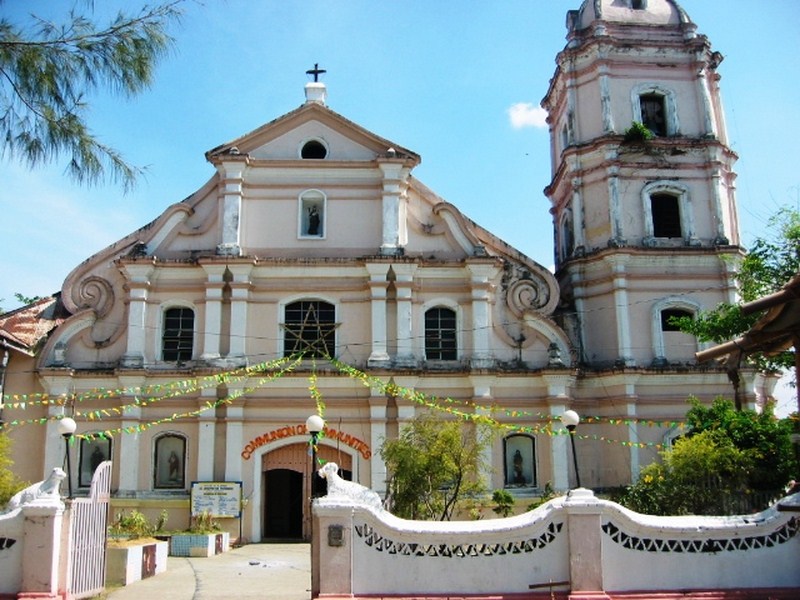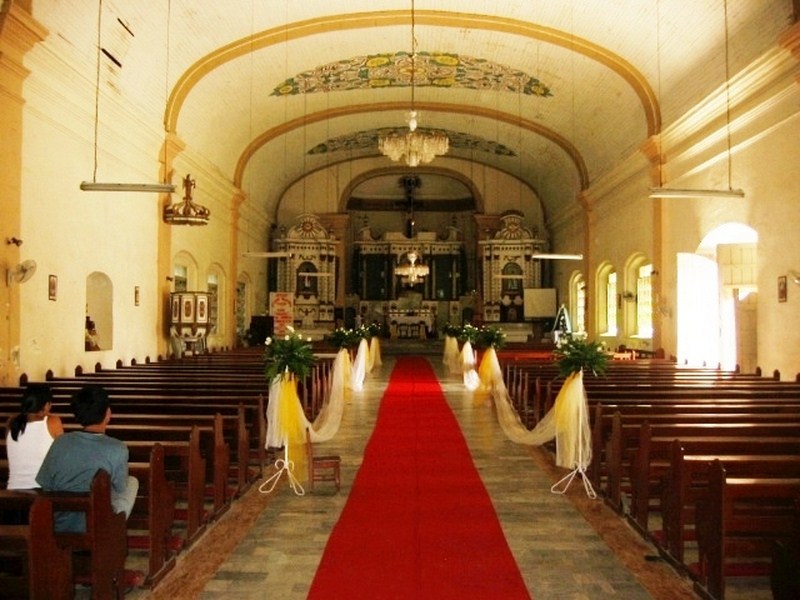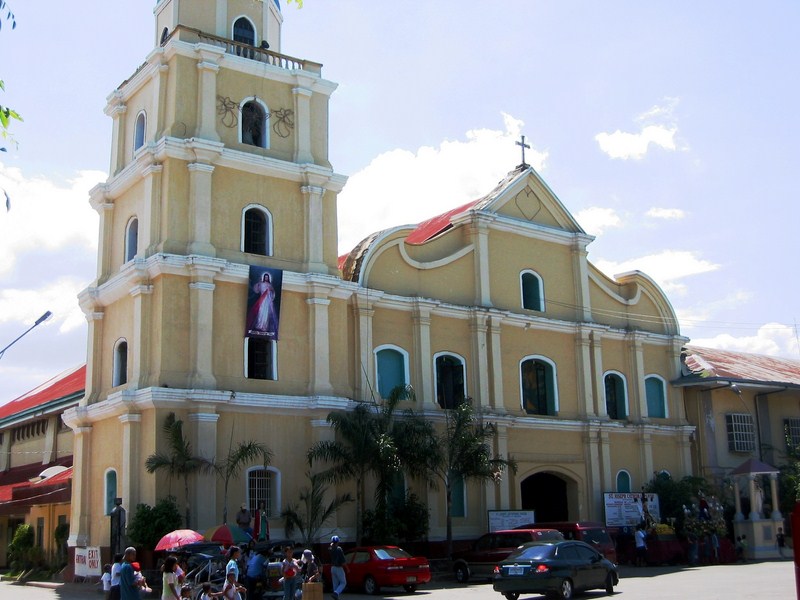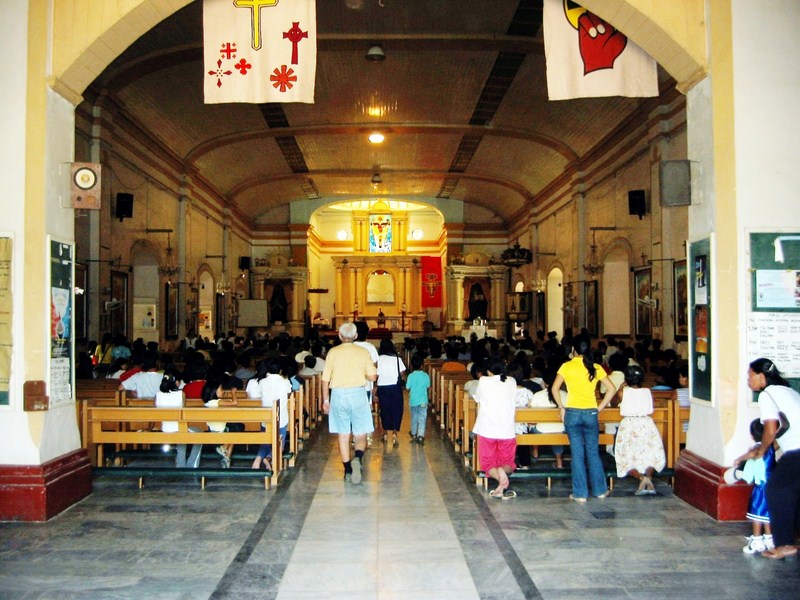 |
| White Beach |
After breakfast at Calapan Bay Resort, we left the city by 11 AM, April 10, for Puerto Galera. Part of the 49-km. drive entailed negotiating dusty, Kennon-like zigzag roads (Puerta Galera is considered as the “Little Baguio” of Mindoro) and steep ravines. We made a short photo op stop over at the Waterfalls Bridge at Brgy. Villaflor where we can view the 131-m. high, roadside Tamaraw Falls, the highest waterfall in the province. Its pool is a popular swimming spot for weekenders. The enchanting view of Varadero Bay heralded our arrival at the beach town of Puerto Galera which spreads out 10 kms. along the coast.
 |
| Puerto Galera town proper |
A marble cross, located beside Cocopoint Hotel, commemorates the sinking of the Spanish warship El Canonero Mariveles, on November 18, 1879, during a storm off Soguicay Bay. The cross was originally erected in wood on March 18, 1897 but was renovated in 1938 by Spaniard Luis Gomez y Sotto. Its inscription reads Ultima tierra que pesarou los tripolantes del Canoneros Mariveles el 18 de Noviembre de 1879.
 |
| El Canonero Mariveles Cross |
After lunch, we made an ocular inspection of Sabang Beach, Small La Laguna Beach, Big La Laguna and White Beach, 4 of the at least 13 superb connected beaches that have been developed for tourism within 7 kms. or so of the town. The somewhat gray sand Sabang Beach has the most developed resorts and offers a good choice of restaurants, discos and watersports facilities. Small La Laguna Beach, sometimes called Coral Beach, has whiter sand and is fairly quiet and cozy. It attracts a lot of foreign backpackers and other budget travelers who like to stay a long time at Puerto Galera. The broad, 1-km. long White Beach, on the other hand, is immensely popular with local tourists. Our last stop, we had our dinner here.
 |
| Ponderosa Golf & Country Club |
After our beach tour, we drove all the way back to Muelle where we decided to check in at fan-cooled rooms with toilet at bath at Coco Point Resort. Breakfast at its restaurant, come morning, was a pleasure as I had a beautiful view of the natural yacht harbor. We checked out right after breakfast and drove 5 kms. (half of it unpaved) all the way up to the 9-hole, 20-hectare Ponderosa Golf and Country Club, located 600 m. above sea level, midway up Mt. Malasimbo in Brgy. Minolo. From this cool and windy vantage point, located southwest of Puerto Galera, we had a tremendous bird’s eye view of Puerto Galera Cove and Batangas’ Verde Island, Maricaban Island and Sombrero Island. Facilities here include a restaurant and bar.
 |
| Balatero Pier |
After about 30 mins., we left Ponderosa by 9 AM, driving back down the mountain and, once back on level ground, made a long stopover at White Beach. It was time to go and we drove to Balatero Pier, 15 mins. from White Beach and near the town proper, arriving there by 11 AM. RO-RO ships dock here and, after paying the necessary fees and fare, we loaded the Ford Explorer on the MV Starlite Odyssey. Our ship left Puerto Galera by 12 noon and we arrived at Batangas Port by 1:40 PM. I arrived in Manila by 4:30 PM.



















